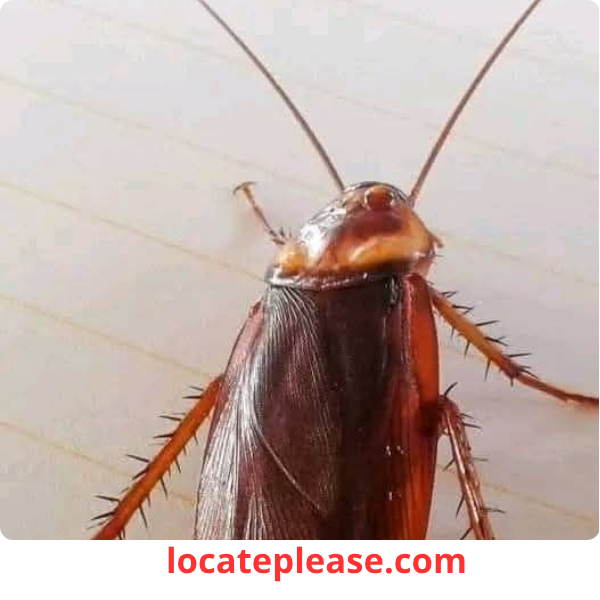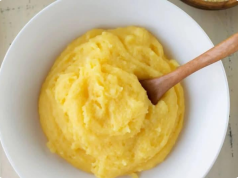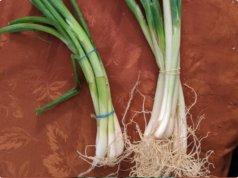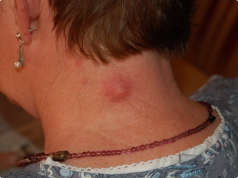When you spot a cockroach scurrying across your kitchen floor, it’s likely the American cockroach — one of the most common and largest species of roach in the world. Despite its name, it didn’t originate in the U.S., but rather in Africa or the Middle East, spreading globally through trade and human travel.
Reaching up to 5 centimeters (2 inches) in length, this reddish-brown intruder is more than just a creepy-crawly nightmare. It’s a resilient survivor, a health hazard, and a persistent pest in homes, restaurants, and urban environments.
Let’s take a closer look at the American cockroach — what makes it so tough, the risks it poses, and how to keep it out of your space.
Key Characteristics of the American Cockroach
|
Size
|
3–5 cm (1.2–2 inches) — the largest common household roach
|
|
Color
|
Shiny reddish-brown with a pale yellow or tanshield-like patternbehind the head (pronotum)
|
|
Wings
|
Fully developed — can glide short distances, though they rarely fly
|
|
Lifespan
|
Up to1 year or more, depending on temperature, food, and humidity
|
|
Speed
|
Can run up to3 mph— that’s over 50 body lengths per second!
|
Habitat: Where They Thrive
American cockroaches love warm, dark, and humid environments. They’re often found in:
- Kitchens and pantries (near food sources)
- Bathrooms and basements (high moisture)
- Sewers, drains, and utility tunnels
- Commercial buildings, restaurants, and hospitals
- Compost piles and mulch (outdoors)
They’re highly adaptable — surviving on starchy foods, paper, glue, and even dead skin cells. They can live weeks without food and a week without water — making them one of the toughest pests to eliminate.
The Damage They Cause: More Than Just a Sighting
Finding one roach often means many more are hiding nearby — and their presence comes with serious consequences.
🦠 Health Risks
- Carry dangerous pathogens like Salmonella, E. coli, and Listeria on their bodies and legs, spreading them to food and surfaces.
- Trigger allergies and asthma — their droppings, saliva, and shed skins contain allergens that can worsen respiratory conditions, especially in children.
- Linked to increased asthma attacks in urban homes with infestations.
🍞 Food Contamination
- Roaches crawl through sewers, garbage, and decaying matter, then onto your countertops and food.
- They regurgitate and defecate while feeding, contaminating food and packaging.
📦 Property Damage
- Chew through:
- Paper and books
- Cardboard boxes
- Fabrics and upholstery
- Electrical wiring (rare, but possible — can cause fire hazards)
Do They Have Any Benefits?
While no one wants them in their home, American cockroaches do play a role in nature:
- Decomposers: In the wild, they help break down organic matter like dead leaves, wood, and waste — returning nutrients to the soil.
- Food source: They’re prey for birds, reptiles, and small mammals.
- Scientific research: Their resilience, nervous system, and adaptability make them valuable in studies on insect physiology, robotics, and pest resistance.
But indoors?
There’s no benefit — only risk.
How to Control and Prevent Infestations
Once they’re in, they’re hard to get rid of. Prevention is key.
✅ 1. Maintain Impeccable Hygiene
- Clean up food crumbs and spills immediately
- Store food in airtight containers
- Take out trash daily and keep bins sealed
- Fix leaky pipes and reduce humidity (use dehumidifiers if needed)
✅ 2. Seal Entry Points
- Close cracks in walls, floors, and around pipes
- Install door sweeps and window screens
- Seal gaps around utility lines and vents
✅ 3. Eliminate Hiding Spots
- Declutter basements and storage areas
- Avoid stacking cardboard or paper near the house
- Clean behind and under appliances regularly
✅ 4. Use Traps and Baits
- Gel baits — highly effective; roaches eat and carry poison back to nests
- Sticky traps — help monitor activity and catch scouts
- Boric acid — works as a slow-acting poison (use with caution around pets and kids)
✅ 5. Call a Professional
If you see multiple roaches, especially during the day (a sign of overcrowding), it’s likely a full infestation.
Pest control experts can:
- Identify hidden nests
- Apply targeted treatments
- Provide long-term prevention plans
Myth vs. Fact: Debunking Roach Myths
❌ Myth: American cockroaches are only found in dirty homes.
✅ Fact: They’re attracted to food, warmth, and moisture — even clean homes can be invaded.
❌ Myth: They can survive a nuclear explosion.
✅ Fact: While highly resistant to radiation (6–15x more than humans), they wouldn’t survive a direct blast.
❌ Myth: Seeing one means there’s just one.
✅ Fact: Roaches are nocturnal and social — if you see one, dozens may be hiding in walls, under floors, or in cabinets.
Final Thoughts: Don’t Ignore the Signs
The American cockroach isn’t just a gross surprise under the kitchen light.
It’s a public health concern — a carrier of disease, a trigger of allergies, and a symbol of unsanitary conditions.
But with vigilance, cleanliness, and prompt action, you can keep them out — or kick them out.
Remember:
👉 One roach is a warning.
👉 An infestation is a crisis.
Stay alert.
Seal the gaps.
Clean the crumbs.
And don’t let this ancient survivor turn your home into its habitat.
Because when it comes to cockroaches — the best offense is a good defense.










